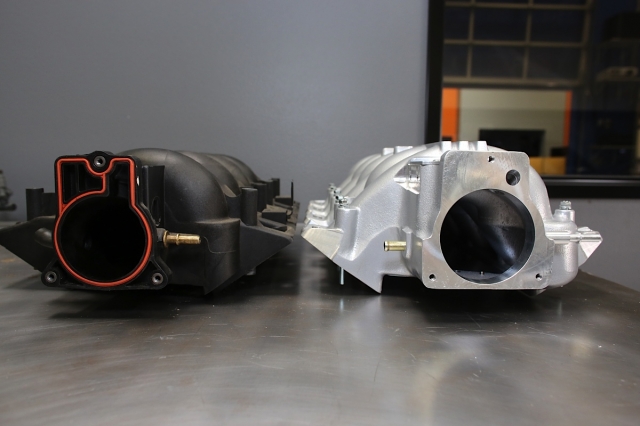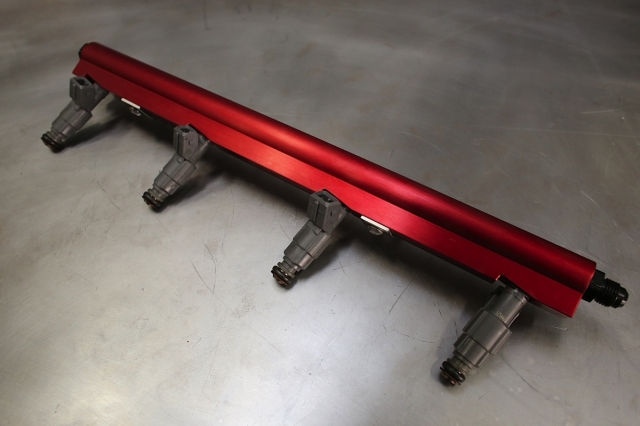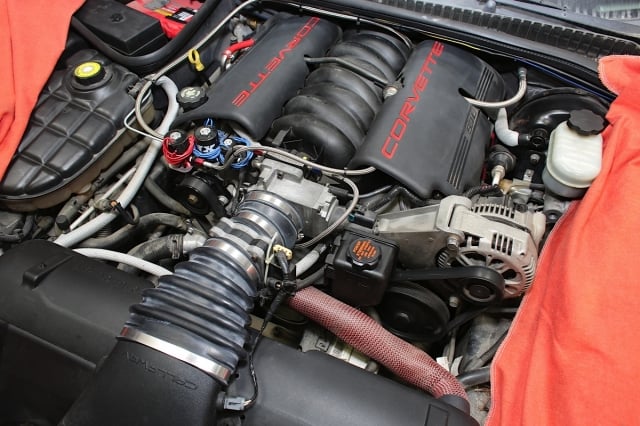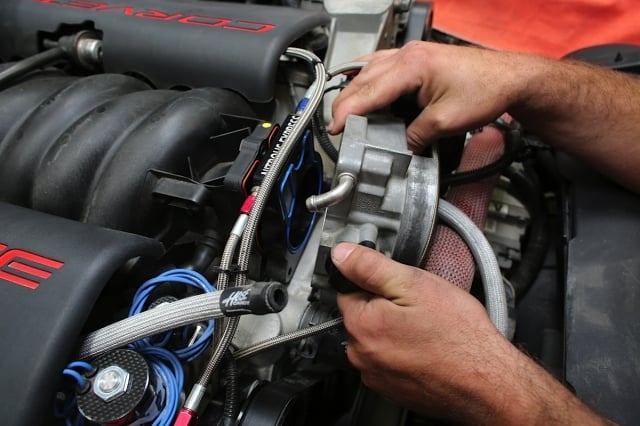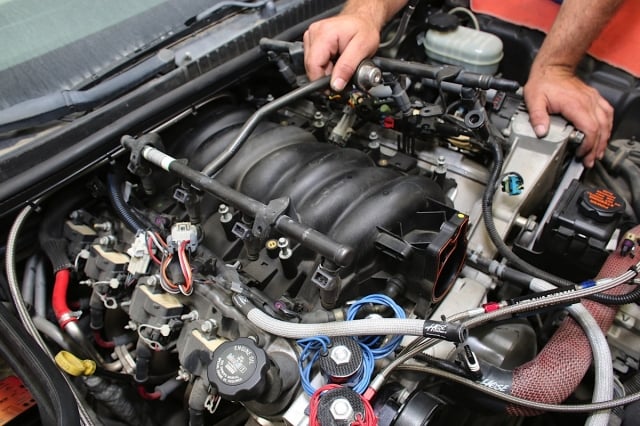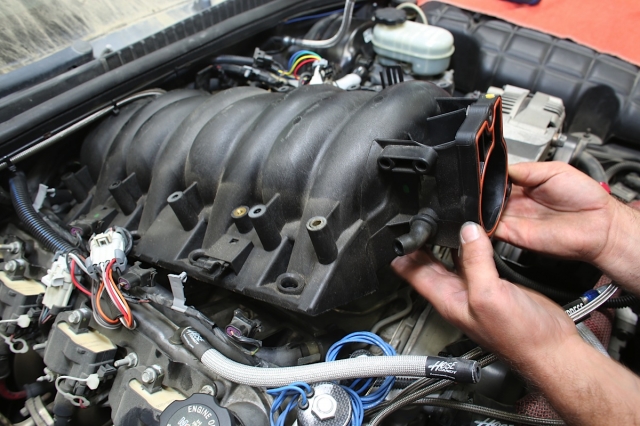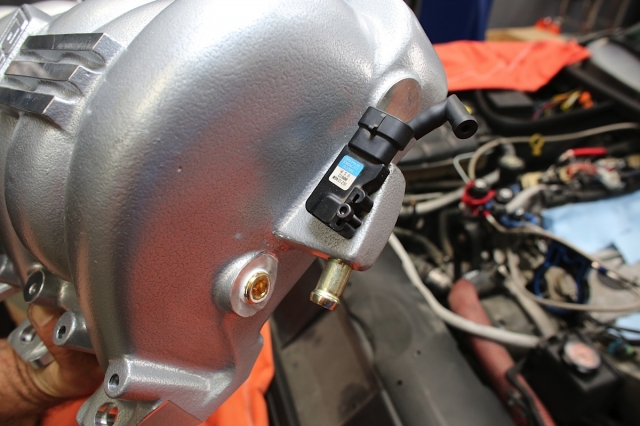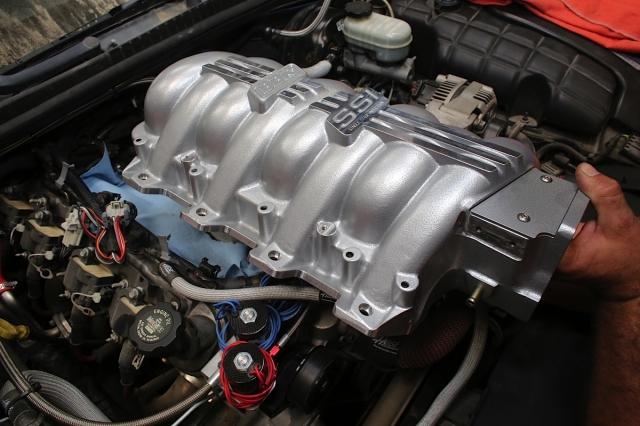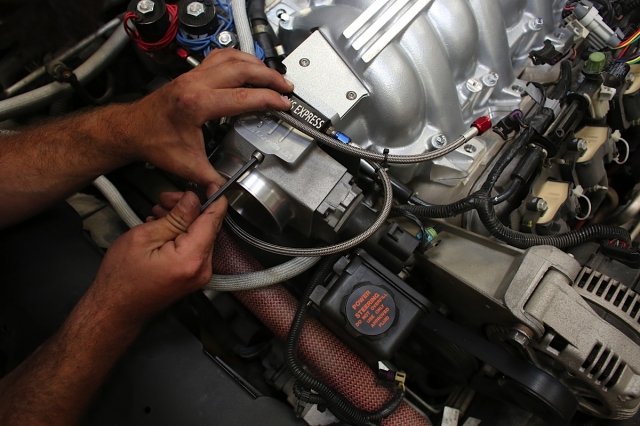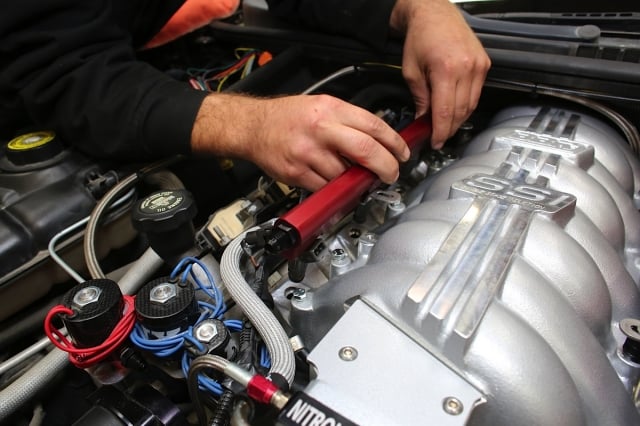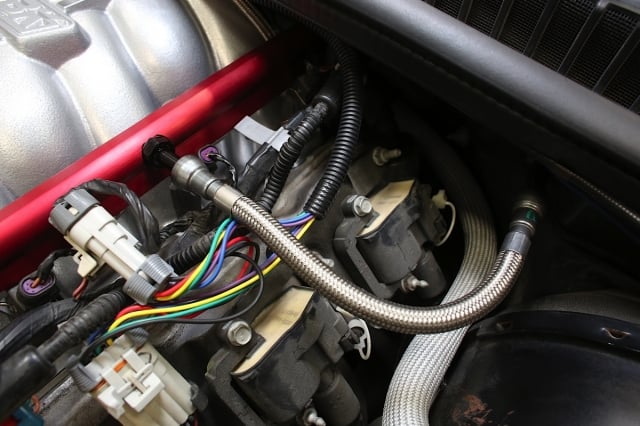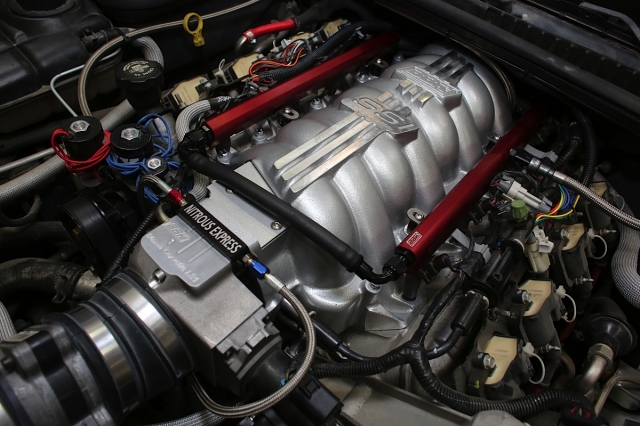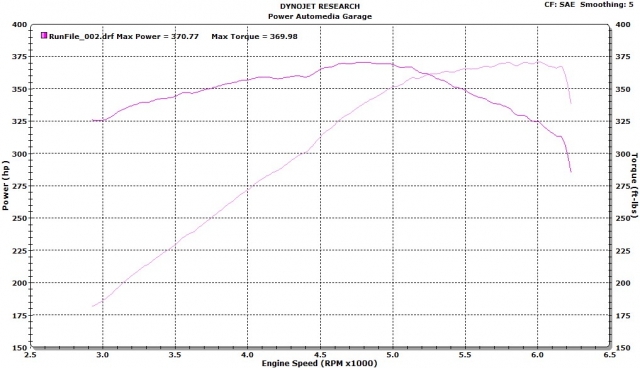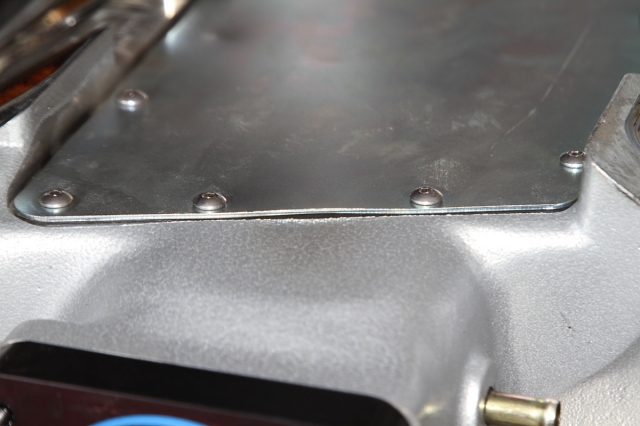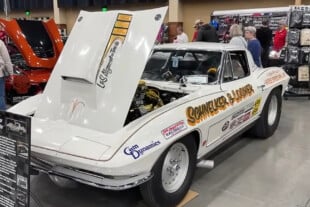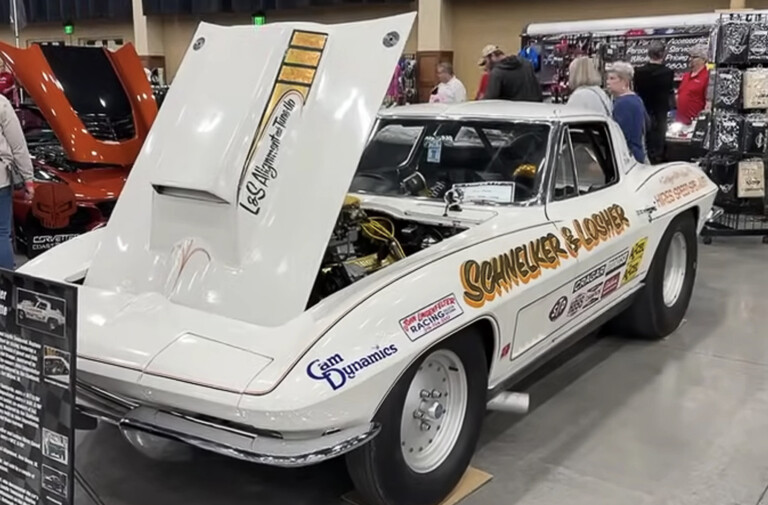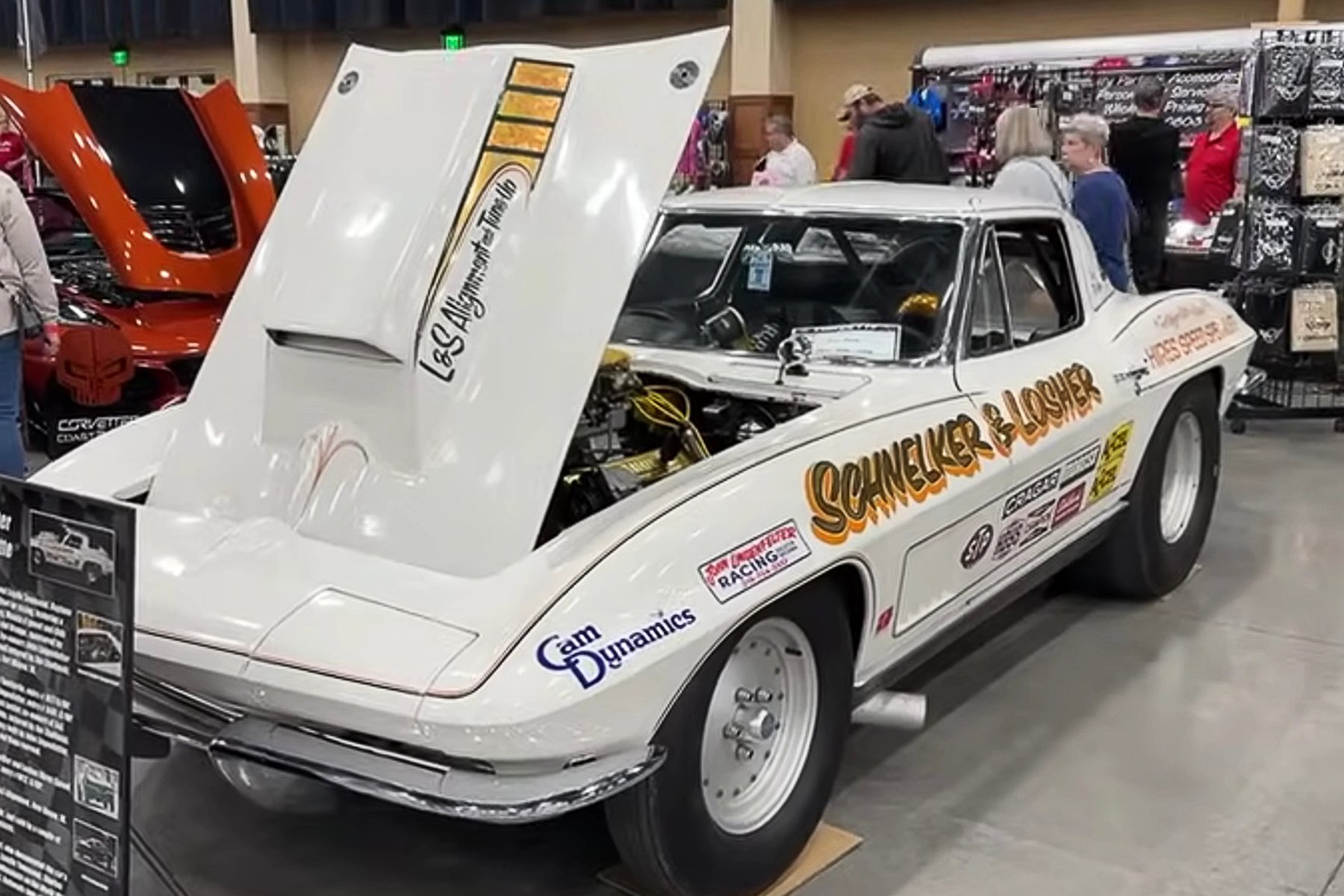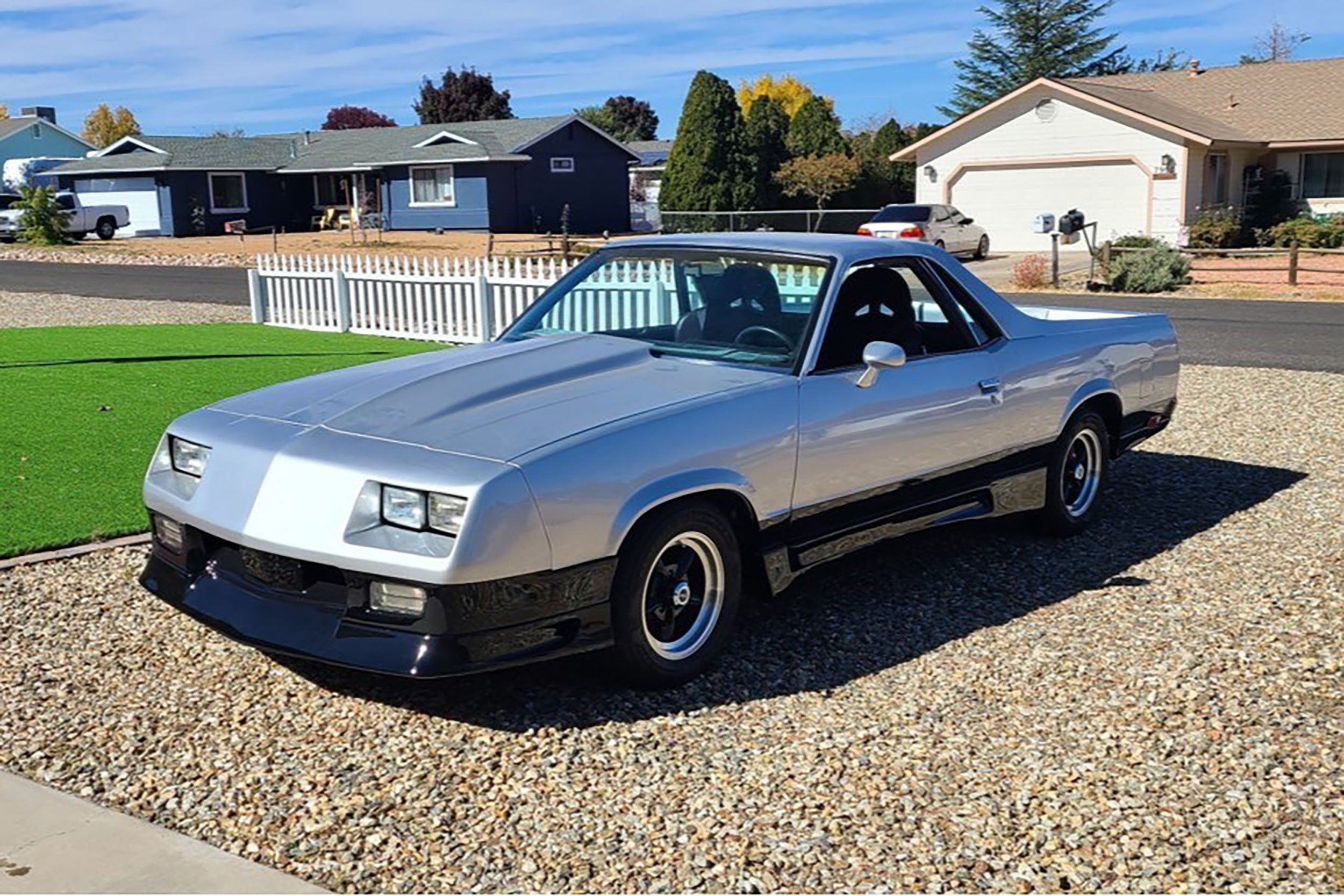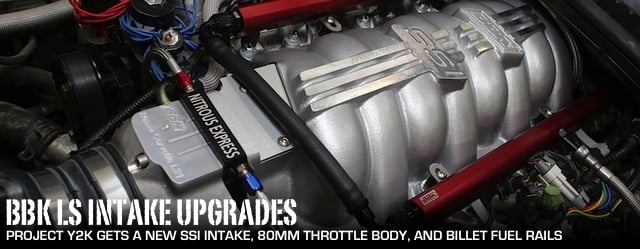 While the classic small block Chevy has to be at the top of anyone’s list of all-time great designs, part of what made it so awesome was the way it responded to hot rodding. A carb swap, a pair of aftermarket heads, a better intake manifold, and some new tubular headers, and you could almost double the output of some factory V8’s. That’s undeniably satisfying when you’re the one turning the wrenches, but when you think about it for a minute, you realize that the reason there was so much power waiting to be unlocked was because the factory hardware just wasn’t that good.
While the classic small block Chevy has to be at the top of anyone’s list of all-time great designs, part of what made it so awesome was the way it responded to hot rodding. A carb swap, a pair of aftermarket heads, a better intake manifold, and some new tubular headers, and you could almost double the output of some factory V8’s. That’s undeniably satisfying when you’re the one turning the wrenches, but when you think about it for a minute, you realize that the reason there was so much power waiting to be unlocked was because the factory hardware just wasn’t that good.
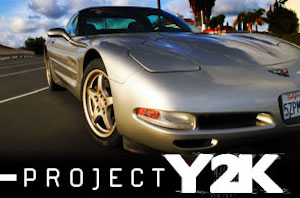 Whether it was emissions issues, the need to make stuff that could be produced inexpensively and in enormous volume, or the mildly Soviet mindset that, “Perfect is the enemy of good enough,” it’s hard to blame GM for producing so many so-so Gen I small blocks.
Whether it was emissions issues, the need to make stuff that could be produced inexpensively and in enormous volume, or the mildly Soviet mindset that, “Perfect is the enemy of good enough,” it’s hard to blame GM for producing so many so-so Gen I small blocks.
They took a good, honest run at it with the reborn LT1 in 1992, but those Gen II engines left quite a bit on the table as well. But the Gen III LS1 was everything anyone could ask for out of a pushrod small block V8 – lightweight, efficient, powerful, and durable. The advent of the LS marked a new flowering of GM factory performance, but it also meant that there wasn’t going to be any more low-hanging fruit for the aftermarket to pick.
A perfect example is the LS1 intake manifold. A decent piece in its own right, GM still found ways to improve its breathing and evolved the LS6 intake, which was a direct swap for cathedral-port heads. In a stunning act of corporate common sense, Chevy decided that since it wasn’t any more expensive to make than the LS1, they’d just make a running change and use it for everything. Even today, that manifold is the bang-for-the-buck standard for Gen III engines, and anyone who wants to make an aftermarket replacement has to do a fair bit of homework just to meet that factory-established benchmark.
Reinventing a Classic
So how do you take on an engineering Goliath like GM, and build parts that can not just compete with but outperform factory parts? For BBK Performance, the development of their SSI intake for cathedral port LS engines began with a look at what was physically possible. “The dimensions and layout are very similar on all of the LS series engines for car applications due to the tight packaging of the manifold area,” explains BBK vice president Ken Murphy. “That allows little in regards to options for overall shape and size externally.”

The most obvious difference between a factory LS intake and BBK’s SSI is materials – instead of composite, the SSI is made from cast aluminum.
With the space the intake has to fit within defined, BBK turned to the internal layout of the manifold. Per Murphy, “Internally things are enhanced considerably rather than being a clean sheet design. The design was a culmination of comparison testing of the best flowing LS factory intakes, as well as competing models already on the market.”
“From there we shaped and modified what we thought would give the best results from what we’d seen on flow testing and dyno testing,” Murphy continued. “Many variations were tried until we felt that we had a manifold that would do better than anything that we’d tested. We tried various runner sizes and shapes as well as the shaping of the plenum-to-runner transitions until we came up with the design that is now in production.”
One Word: Plastics
Aluminum allows for shapes that just can’t be done economically in a plastic unit. – Ken Murphy, BBK
An area where even a casual observer will immediately note a difference between the SSI intake and the factory manifolds is the materials from which they are made; while GM switched over to composite (commonly called “plastic”) materials, BBK chose to use good old aluminum for the SSI. The switch at an OEM level to composites happened for a lot of good reasons – they’re lightweight, never rust or corrode, less expensive to tool up and produce than cast metal designs, and they pop right out of the mold ready to bolt up with little to no finishing required. From a performance standpoint, they also offer the advantage of not readily absorbing or transmitting heat, which, in theory, should be a performance advantage.
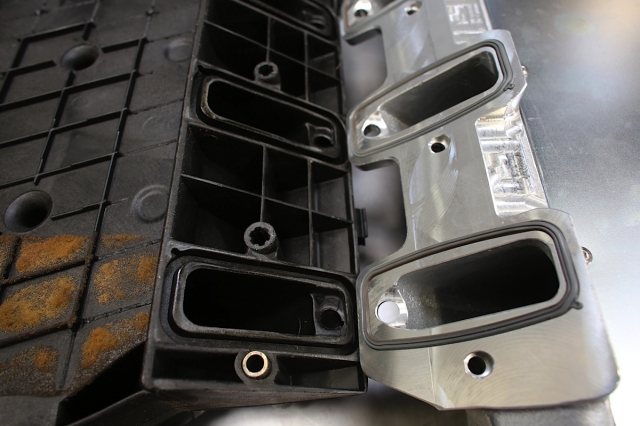
The SSI manifold uses factory-style O-ring seals. In this view, you can see how the aluminum construction offers an opportunity for porting that the thin-walled composite doesn’t.
So why did BBK decide to go with a cast metal manifold? Glad you asked! Murphy explains, “Aluminum, from a manufacturing standpoint, allows for shapes that just can’t be done economically in a plastic unit, unless the unit is split up into multiple parts. If you do that you have a gasketing nightmare with flex and leaking issues.”
Another advantage to aluminum that means nothing for an OEM, but is of fair importance for the aftermarket, is ease of modification – “The aluminum variant allows for the end user to further enhance flow to his specific needs via porting,” Murphy explains, “where the plastic allows very little material removal. It needs to have much more consistent wall thicknesses than aluminum.”
The SSI is designed with this in mind; per Murphy, “It is for this reason that we have a removable plenum cover on the underside. In fact, in addition to access, this cover allows a bursting point for the rare occurrence of nitrous explosions (which will literally destroy a plastic intake manifold) as well as saving weight.”
“But what about heat soak?” you ask. Murphy has an honest reply; “Any aluminum manifold will suffer slightly from heat soak conditions, and anyone who says differently is lying. The heat soak, however, is gone shortly after you start actually driving the vehicle, at which point heat transfer into the airstream compared to the plastic models is minimal at best.”
Supporting Cast
To get some experience of our own with BBK’s SSI intake, we endeavored to perform a swap on Project Y2k, our in-house 2000 Corvette test vehicle. Y2k has already received a decent selection of upgrades, including long tube headers and a cam swap, and wears a factory LS6 manifold. To get the full benefit from the manifold swap, we also sourced BBK’s 80mm three-bolt drive by wire throttle body and their high flow fuel rails.
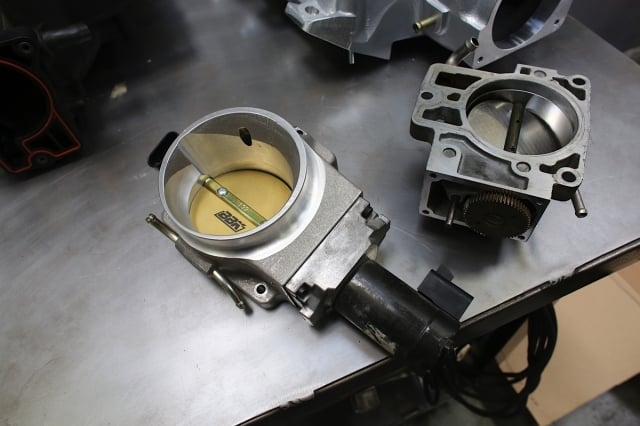
BBK’s 80mm throttle body is a direct swap for the stock unit, and utilizes the OEM throttle-by-wire motor and TPS.
Can you use the SSI intake with your stock throttle body? “Yes, the intake will show increases while using the stock throttle body,” Murphy admits. “However, the gains are diminished, which is why we offer a direct fit replacement throttle body with a larger diameter bore for both the electronic throttle as well as standard cable drive applications.” The throttle body is CNC machined from a 356 aluminum casting, and per Murphy, “The entire throat of the BBK throttle bodies have an enhanced entrance contour, as well as a very smooth machined finish to maximize airflow. However, 90 percent or more of the gains come from the larger bore and the decreased cross section of the throttle shaft.”
Since we were also planning to install a nitrous system and a new upgraded in-tank fuel pump to make sure we didn’t have any tragic leanness, going with BBK’s high flow billet aluminum fuel rails also made sense. How much horsepower will they support? “That is a very open ended question as it is entirely dependent upon fuel pressure being run,” Murphy demurs, but then adds, “The BBK fuel rails have a 1/2-inch inside diameter, so it can easily handle huge horsepower requirements easily upwards of 1,000 if everything else is sized to match the flow possibility of the rails. Consider even the largest fuel injectors and look at how tiny the orifices are, and then add all four of those up on a bank of cylinders and compare that total area to a 1/2 inch diameter hole in the BBK rails! You simply won’t ever produce enough power for the rails to become a limiting factor.” Since our goals are to do something on the order of 500 to the tires, we should be well within the rails’ ability to keep the juice flowing.
Tune Out Of Opportunity, Not Necessity
The throttle body came off, followed by the coil covers and the fuel rail beneath.
Finally, we installed the new fuel rails, which come with fittings to directly plumb into the factory fuel line.
We now have a bulletproof intake system that can flow more than enough air to support our current level of modifications, as well as not becoming a bottleneck when we step up to more efficient cylinder heads or even forced induction, with fuel rails to match. We also have the peace of mind that we were looking for in terms of being able to gracefully deal with a nitrous backfire, should (knock on wood) we have that misfortune, rather than ending up with a hood pad studded with shattered plastic.
Stay tuned for future updates as we take Project Y2k back to the track for some rubber-meets-the-road testing – we have a lot more in store for this stalwart C5!
POSTSCRIPT:
Subsequent to our installation, we took Project Y2k to the Auto Club Dragway at Fontana, California for some quarter mile testing for the first time with nitrous oxide injection installed. While we’d done dyno pulls with the spray activated, we hadn’t attempted any gearshifts, and as it turns out, we had the upper limit on the window switch set too high – generally speaking, you want to make sure the squeeze has stopped flowing well before your shift point in order to prevent backfires when you grab the next gear.
Unfortunately, backfires are what we got, with the 3-4 upshift precipitating a big bang, a “reduced engine power” warning from the instrument panel, and an extremely loud whistle from under the hood. A subsequent teardown of the intake manifold in the pits showed us just how wise we had been to switch to the BBK manifold…
When we flipped over the manifold, we discovered pressure from the backfire had actually bent the forward edge of the steel plate that seals the bottom of the intake manifold, creating a vacuum leak. While that might sound like a bad thing, it actually saved our proverbial bacon – the explosion that very well may have shattered a stock composite manifold instead only slightly damaged the SSI, and it was easy to pull the cover off, gently tap it back flat and true, and reinstall it for a perfect seal once again. That was good news considering we’d driven the car more than 100 miles to the track, and didn’t have an easy way to get it home should it be undrivable.
It wasn’t exactly the way we wanted to test out the BBK SSI manifold, but it certainly was convincing proof of the advantages of the design when nitrous-fueled backfires are a possibility. Next time we know how to avoid them in the first place, but having the SSI on our Corvette meant the difference between a bit of work in the pits, and a manifold in pieces plus a tow home.




